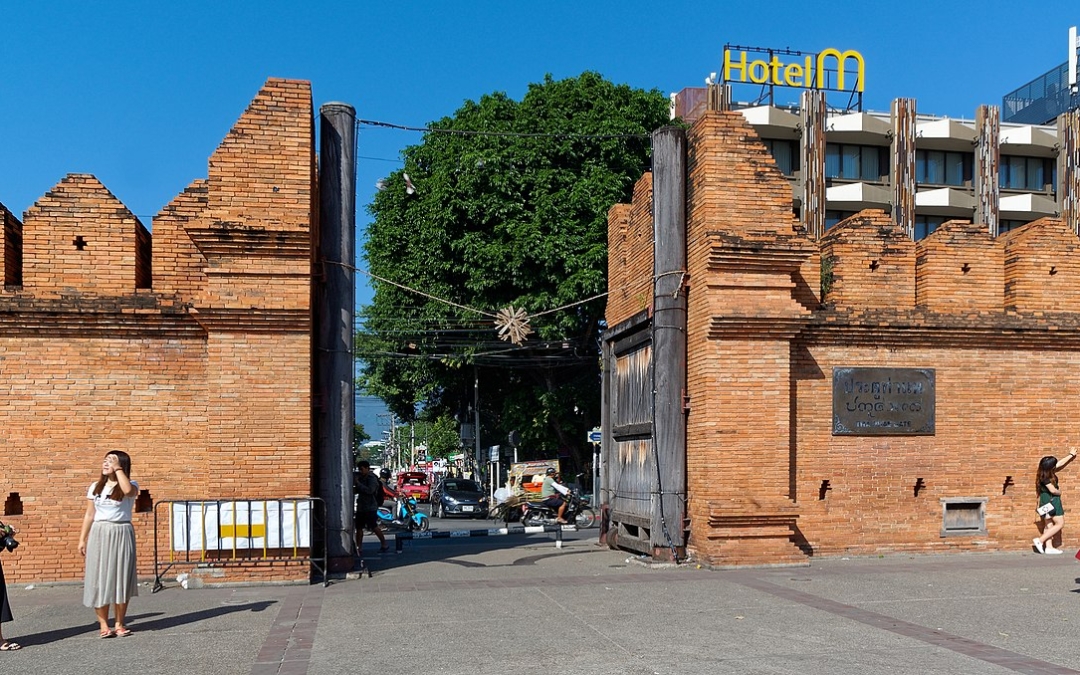Welcome to Thapae Gate – the east entrance to the old city, a fortified square encased by a moat and tall walls, built way back in the 13th century. This gate has been a silent spectator to the region’s history for nearly 800 years, acting as a grand entrance for merchants, diplomats, and monks during the days of the Lanna Kingdom.
You will likely have the opportunity to walk through Thapae Gate if your staying at a hotel inside the moat or visiting the old city. It’s the starting point for the Sunday Walking Street Market and around it there are numerous small streets with cafes, bars, souvenirs shops, book shops. While the many pigeons in the square won’t interest most visitors, it’s pleasant to walk around at night. There’s not much in the way of information besides a map, it’s been redeveloped over time and a road now occupies a direct line to the square, so you’ll need to image how it was with a large river meeting the moat. ‘Thapae’ means ‘to float’ in the Northern Thai dialect, signifying the gate’s original use as a docking point for rafts that would ‘float’ down the Mae Ping River. The current Thapae Gate that you see is a recreation from the 1980s, rebuilt according to architectural records and archaeological evidence.
Thapae Gate has a role in some of the city’s most exciting events. Chiang Mai’s most popular festivals, Loy Krathong and Songkran, see the gate and surrounding streets swarming with locals and tourists, bringing the old structure alive with celebrations, music, and dance.
The wall surrounding the city originally had five gates, each having a specific purpose and named according to the direction it faced. Thapae was the eastern gate, and the only one to retain its historical relevance and popularity to date.
Thapae Gate is not just an ancient structure; it’s a living, breathing part of Chiang Mai’s culture and history, where stories of the past meet the vibrancy of the present.


